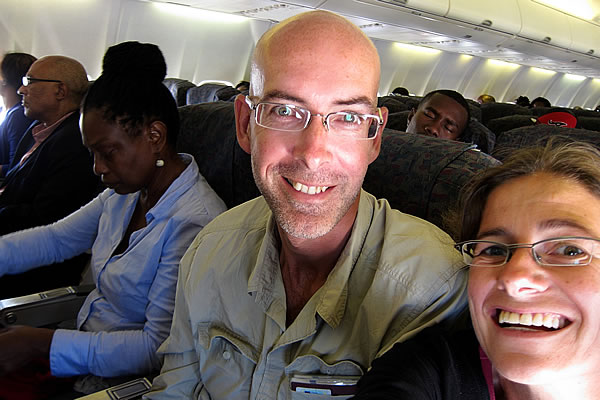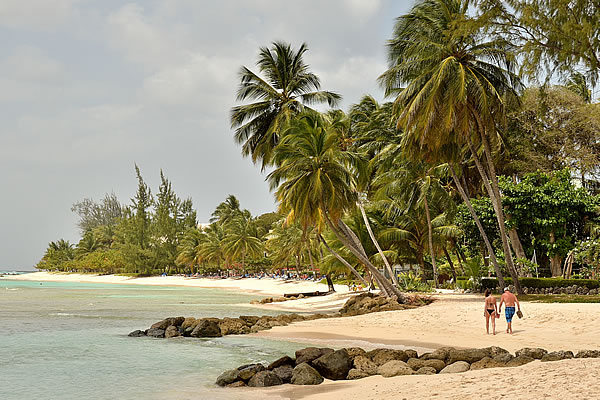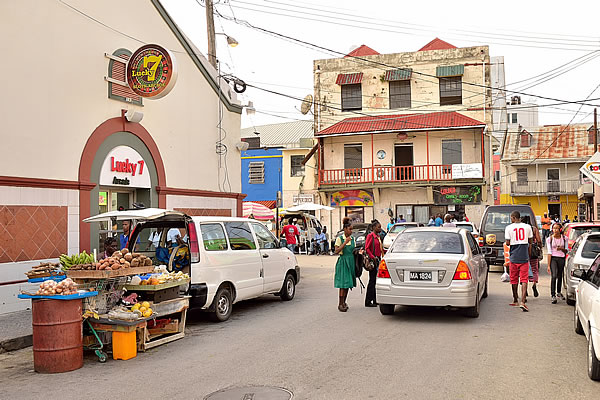English | Dutch |
|
| Barbados: sun, sea and sand | |
Gros Islet (St. Lucia), March 18th 2015
|
|
| |
|
Barbados is undoubtedly one of the islands in the Caribbean with the most appealing name. For many people, especially those coming for a holiday to this small Caribbean island nation, Barbados means three things: sun, sea and sand. And so it actually is. The island is flooded by mostly British tourists, who can directly fly from just about every major city in England to this piece of paradise in the Caribbean. There are many, many Brits on this island. Some come for a short holiday in the sun, but there are also many who flee here for several months a year, to escape the rainy weather back home and winter in one of the many condos (apartments) that the island is dotted with. The history of Barbados is comparable to that of many other islands in the region. The first people to permanently inhabit the island, arrived here with small canoes from the South American mainland. From the 16th century onwards, Barbados was in the grip of the slave traders. Initially the inhabitants of Barbados were used as labour workers in the silver and gold mines of the new Spanish colonies in South America. In 1625 the island was claimed for the British crown and a few years later, the first Britons arrived to settle here permanently. Barbados was transformed into one of the most successful sugar cane producers in the world and ship loads of slaves from Africa were brought here to work on the plantations. The slave trade and the use of slaves was eventually abolished in 1807 and 1838 respectively. But not a lot of things changed, because most slaves had no other options than to continue working for the plantation owners, of course for marginal salaries. |
|
 |
|
Selfi in the airplane on the way from Jamaica to Barbados |
|
From the thirties of the twentieth century, the land ownership relationship slowly began to change. The black population got more money in hands because large groups worked for several years as an immigrant worker in the region, for example as construction workers on the Panama Canal. In addition, the sugar market was no longer as profitable as before, making white landowners more likely to sell land to the black population, something that was previously always avoided. But the most profitable pieces of land, the land that is still very profitable today in the tourist business, are still in the hands of foreigners. That is the complaint we have heard several times from local people. A lot of money is earned on the island from tourists, but most of these profits flows straight back into the pockets of foreign investors. There is not much more than tourism that Barbados has nowadays. The south and west coasts of the island are largely developed for tourism, through a chain of resorts, restaurants and bars. Development of the tourist infrastructure started in the 1960s and it is not difficult to see, that much of it isn’t done with a long term plan in mind. It has been a hodgepodge of projects. And that is a pity, because apart from some of the beaches, Barbados isn’t a real paradise anymore. A nice atmosphere is hard to find, or it must be found in one of the many walled resorts. Blinded by the tourist dollars, the local government seems to have everything approved and developers have been given a free hand, with all its consequences. Ugly buildings dominate the coastline and because permits are given to build almost on the beach, there is no place for a beach promenade anymore. | |
 |
|
A picture-perfect beach on Barbados |
|
With the exception of a few, most tourists stay only in the area around their hotel. Therefore, the island is outside the tourist areas still refreshingly authentic. Especially the east coast of Barbados is beautiful. This is the part of the island without the powder soft beaches, which means that large-scale development has not occurred here (yet). There are some beautiful walks in the area, including the approximately 8 kilometre walk along the rugged coast of Bath Beach to Bathsheba. The main town of Bridgetown is definitely also worth a visit with its few interesting colonial buildings and some attractive shopping streets. Public transportation is well organized in Barbados. Almost all corners of the island can be reached by bus that drive on a schedule for a flat fee of 2 Barbadian Dollars (US$ 1). Is Barbados worth a visit? That depends entirely on the expectations you have of the island. Are you going purely for a beach holiday where sun, sea, sand and beer are the main ingredients, then you certainly have found the right place. In that sense, Barbados is perhaps the more expensive/upmarket alternative to for example the Costa del Sol in Spain. However, if you go for a holiday where you are also looking for more than just the activities on and around the beach, then you can probably better travel to another destination. However, if you still want to stay in this region of the Caribbean, then the nearby islands of Saint Lucia and Saint Vincent are probably better options. |
|
 |
|
The atmospheric centre of Bridgetown, Barbados' capital town |
|
 |
|
A colourful supermarket in Bridgetown |
|
 |
|
Coconuts for sale |
|
 |
|
The beutiful hike from Bath Beach to Bathseba on the east coast of Barbados |
|
 |
|
'Soup bowl' a famous surf spot on Barbados |
|